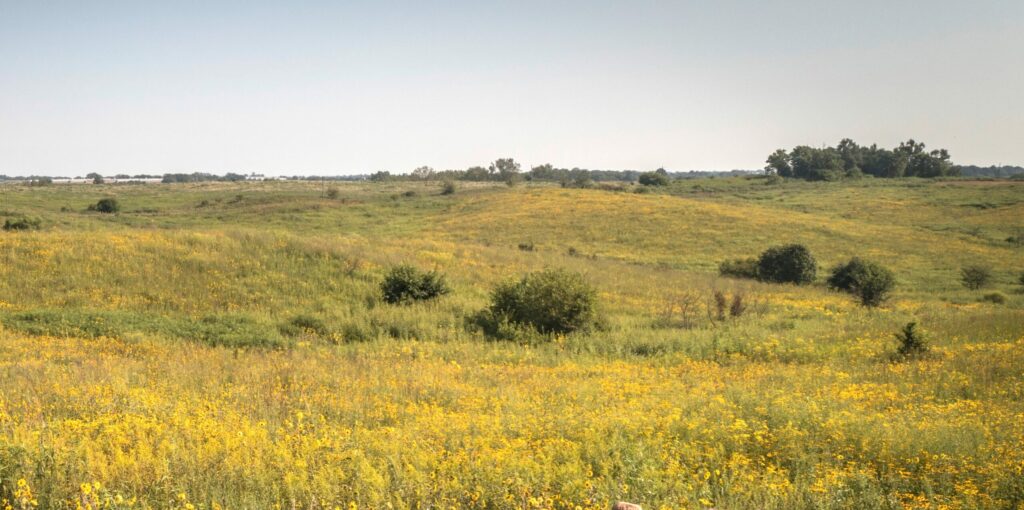North America’s grasslands – tallgrass, mixed grass, and shortgrass prairie – have suffered greatly at the hands of expansion. Grasslands once covered much of North America. Today, most of our native grasslands are gone. Over 50 million acres have been lost in the last decade alone, making grasslands one of the most threatened ecosystems on our continent.
To save what little native grassland habitat we have left, and to lead robust restoration efforts, our nation’s largest conservation organizations, including Pheasants Forever & Quail Forever, the National Wildlife Federation, National Wild Turkey Federation, Congressional Sportsmen’s Foundation, and Theodore Roosevelt Conservation Partnership are teaming up to call on Congress to establish the North American Grasslands Conservation Act.
Agriculture is critically important to the economy of this country. Corn, soybeans and other row crops grown here in America help feed the world. We have to find a way to strike a balance where prime agriculture lands remain in cultivation, but marginal lands, those not best suited for growing crops are returned to native habitat. We need government, agriculture and industry to collectively bring greater value to grasslands.
A study titled, “Cropland expansion in the United States produces marginal yields at high costs to wildlife, co-authored by Tyler J. Lark, Seth A. Spawn, Matthew Bougie and Holly K. Gibbs, was published in Nature Communications in September of 2020. The study states, “We find that croplands have expanded at a rate of over one million acres per year, and that 69.5% of new cropland areas produced yields below the national average, with a mean yield deficit of 6.5%. Our findings demonstrate a pervasive pattern of encroachment into areas that are increasingly marginal for production, but highly significant for wildlife, and suggest that such tradeoffs may be further amplified by future cropland expansion.”
The National Wildlife Federation (NWF), which is the largest member-based conservation organization in the country, works extensively on grasslands protection. NWF is currently one of the organizations leading the call for the creation of the North American Grasslands Conservation Act.
In response to the above mentioned study, Aviva Glaser, director of agriculture policy at the NWF is quoted on their website, as saying, “The ongoing destruction of our nation’s native prairies highlighted in this research shows that existing policies have failed to protect a cherished American landscape. Without a national strategy to protect and enhance grassland habitat, our last remaining native prairies are at risk of vanishing forever, along with the many plant and animal species that populate them. Federal policymakers should combat this troubling trend by establishing a North American Grasslands Conservation Act, modeled after the North American Wetlands Conservation Act, to stop habitat loss and ensure healthy landscapes for future generations.”
The conservation of North America’s grasslands has to be bipartisan in nature. Environmentalists must understand and be willing to accept the critical role of agriculture to the economy of our country. Agriculture needs to continuously do better in valuing the native ecosystems of great concern to wildlife and ecosystem conservation. Industry needs to innovate and create modern methods of generating income from alternative agriculture practices, like renewable energy. And government needs to make sure the playing field is fair, by ensuring the critical aspects of ecosystem conservation and agriculture are all considered.
The Conservation Reserve Program (CRP) is heralded as the most successful government program for grasslands on private land. Yet, the number of acres enrolled continues to decrease. In 1985, the Farm Bill authorized up to 45 million acres for CRP. It peaked at 37 million acres. Recently, CRP acres enrolled dipped below 22 million. Many wanting to signup can’t. This loss of grasslands is detrimental to the wildlife, birds and insects reliant on grasslands habitat. It’s also bad for humanity.
Grasslands work against climate change by sequestering carbon in the soil by keeping dangerous greenhouse gases underground. Grasslands also reduce flooding. Their complex root structures can grow 15 feet deep in the soil, absorbing large quantities of water. Grasslands also help with erosion control and block pollutants from entering our streams, rivers and other water sources.
Wetlands, another critical natural habitat that has faced peril over the last couple of centuries, receive protection through the North American Wetlands Conservation Act (NAWCA). Creating similar legislation to protect our grasslands is long overdue.
See you down the trail…
Brandon Butler
bbutler@driftwoodoutdoors.com
Pic: Conservation organizations seek protection of grasslands with establishment of North American Grasslands Conservation Act.
For more Driftwood Outdoors, check out the podcast HERE or anywhere podcasts are streamed.




